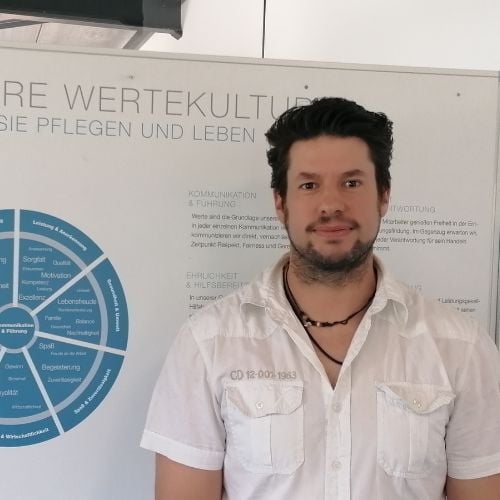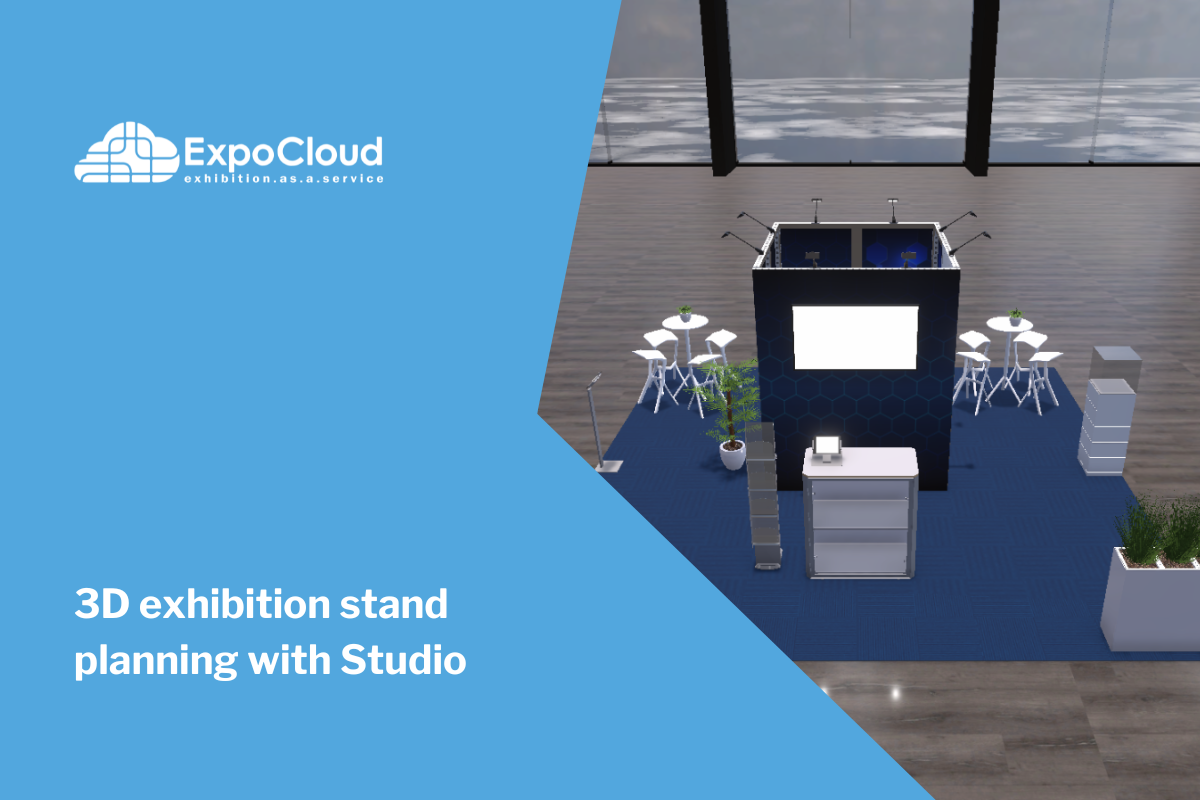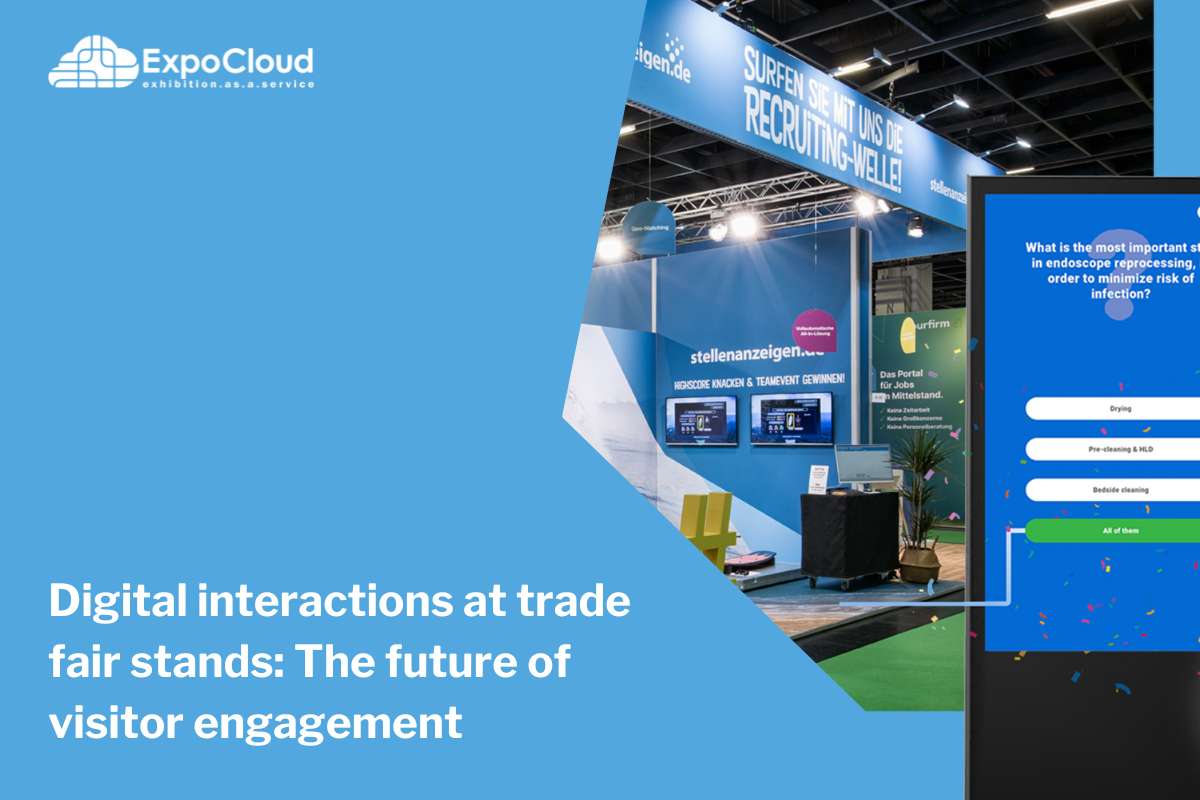3D exhibition stand planning with Studio
Be inspired by the prefabricated stands in the public version of Studio Anyone planning a trade fair appearance knows the challenge: How do I bring...
5 min read
 Alexander Plum
:
Sep 22, 2022 1:15:00 PM
Alexander Plum
:
Sep 22, 2022 1:15:00 PM

I have now been employed for almost 4 months at WWM GmbH & Co. KG. as Online Marketing Manager and I'm very happy. There's just one thing that really bothers me: I don't know our ‘product’ well enough! The topic of exhibition stand construction was and is completely new to me. I'd never come into contact with exhibition stand construction before, let alone modular stand construction. Why now?
What is much more important to me personally is that I understand our product! And it's not enough for someone to tell me: ‘Yes, this is a modular exhibition stand construction system. You simply put the frames together and then embellish them with printed textiles and LEDs.’
I need to have tried out a product or service that I want to market myself. I want to know how the product feels.
Christian (Coppeneur-Gülz, my boss) gave me the opportunity to do just that almost exactly 10 days ago. One day helping to set up a modular exhibition stand. Live on site. Not just to look. But to lend a hand.
Monday 12 September 2022 was the day. I travelled to Cologne with my ‘fitter’ colleague Bernhard. More precisely, to the exhibition halls of Kölnmesse, where the Zentrale Personal Europe Messe (ZPE22 for short) took place from 13 - 15 September 2022. Hall 4.2 was our destination for setting up a modular exhibition stand for our customer Hansefit GmbH & Co. KG. It was my first time. I've been there for a few weeks now, but my job is normally limited to marketing. But what could be better than setting up a modular trade fair stand and dealing directly with our product or service?
To start with: it was very instructive and nothing ever works out as planned!

Monday morning. 6.30 a.m. Meeting with Bernhard at the Service Hub in Alsdorf. We set off together shortly after half past midday. Our van had already been loaded on Friday. In addition to our material, we took printing textiles and profiles for a colleague who was also at the ZEP22 to set up for another customer. As I have little or no experience of driving loaded vans, I was glad that Bernhard took the wheel. Bernhard drove confidently to Cologne. We were pleased that we made good time at this hour and even got to the Cologne Exhibition Centre before 8 o'clock. Too early, though. Finding the right entrance to Hall 4.2 was not so easy. Bernhard knew his way around, but where the original entrance to Hall 4.2 was, there was now a multi-storey car park. So we asked our way round. A few minutes later we arrived at our destination: Supplier entrance hall 4.2!
Relieved, we got out of the car park and entered the exhibition hall, which was already bustling with activity. Armed with the hall plan, we looked for our place. After a brief orientation, we found it. The set-up area had already been prepared accordingly: Power connection, as ordered, and a platform had already been erected, as the neighbouring stand needed a water connection, which was under our stand.
Bernhard gave us two or three brief instructions and we unloaded. Fortunately, the distances were all short, so we were able to unload quickly.
Of course, the most important ‘device’ had to be set up first: The coffee machine. Nothing works without it! I quickly realised that this wasn't Bernhard's first time setting up an exhibition stand and that he was prepared for anything. While the coffee machine was heating up, Bernhard explained to me how to start setting up. In the past, starting with the floor has proved to be a good idea. So we started by laying the carpet tiles. To do this, double-sided adhesive tape had to be stuck to the platform at certain intervals in advance to hold it in place. The carpet tiles are then laid according to a specific system. Bernhard laid the first carpet tiles, while I packed the carpet tiles from the pallet into small ‘packages’ and laid them out for Bernhard. Then, of course, I helped to lay them. Basically, it wasn't difficult, you just had to stick to the laying direction and of course work precisely so that there were no gaps.

Once the floor had been laid, the frame system had to be constructed. We had to bear in mind that three walls were backlit with LEDs, so wider frames were used for these walls, each of which still had to be connected. As it is a modular frame system and based on a building block system, it was only a matter of connecting the other frames to create the basic structure of the exhibition stand. Bernhard began to ‘build’ the basic structure from the modular frames. I assembled the LED frames. Piece by piece, we erected the basic structure for the modular trade fair stand for Hansefit. As I said, building an exhibition stand is completely new to me, so I often had to try out how things came together. But a lot of things also came together with logical thinking.😊
It got a bit tricky when we had to put the attachment on the cabin. Unfortunately, we had two ladders that were too short, so we had to borrow a larger ladder from the neighbours. They got a coffee from us in return. With all his experience and the help of the neighbours, Bernhard managed to install the cabin superstructure safely.

Once the basic construction was in place, the LEDs had to be installed in the appropriate frames. After a short briefing, Bernhard left the installation of the LEDs to me. Great. I have no idea how many would fit in a frame like that! So I started to fit LED strips all around the first frame. When I had admired my work and tested it, I realized that the Cologne-Bonn airport was not necessarily less illuminated. Much too bright! So it couldn't be right. What's more, according to my system we would have had far too few LEDs. After a brief mischievous smile, Heinz (the fitter from the other stand) explained to me that the frames were only fitted with LEDs on the left and right. With this information, I dismantled everything and adjusted it accordingly. Suddenly we also had enough LED strips for the other frames. So I fitted all the frames with LEDs and wired them accordingly. As one wall of the cabin attachment had to be backlit, I had a problem: where to put the transformer? Bernhard knew what to do. Bernhard cleverly positioned the transformer and the cabling in the frame.
Saving the best for last. I thought! The installation of an LED video wall in a modular exhibition stand is simple in principle: place the video panels according to the plan using a plug-in system, wire the video input and output and connect them to the video source. And if there is still power, the LED video wall should light up and play the corresponding video. Power was not the problem. We had it. As is the case, some things don't always go according to plan. Even with the best organisation and preparation. It was the same here. But there is a solution for every problem, so we quickly located our ‘troublemaker’ and were able to solve the problem. Once everything was installed correctly and satisfactorily, it was time to fine-tune the cabling. Three LED spotlights were also added to provide additional lighting for the exhibition stand. Of course, the cables behind the stand also had to be laid correctly so that nobody got caught in the cables and thus disconnected the lighting or the LED video wall from the power supply.

As you may have already recognised in the report, there are many challenges when setting up a modular exhibition stand. There is a lot of planning and organising. The vans are loaded with materials and when you get to the site, you realise that something is missing (fortunately not in our case) or that something doesn't work as planned or ensure a smooth set-up. Nevertheless, the bottom line is that the customer gets what they ‘ordered’. And everyone in the team has to make sure of that. And the best thing is when the customer is satisfied at the stand acceptance and you can explain everything to them, where to switch on what, etc.
It was an interesting, long and, above all, very instructive day. I am glad to have taken part in this day and to have seen what fitters have to ‘deal with’.
Now that I know how it works, I have to say that a modular exhibition stand is a great solution for companies to present themselves at trade fairs. Especially if you organise several trade fairs a year. You are flexible and assembly and dismantling is also relatively quick compared to a completely customised exhibition stand, which can take 2-3 days to set up. Of course, the costs and the sustainability aspect should not be completely disregarded. Where the modular exhibition stand has a clear advantage.
Und hier noch das Endergebnis😀


Be inspired by the prefabricated stands in the public version of Studio Anyone planning a trade fair appearance knows the challenge: How do I bring...

The future of visitor engagement In the dynamic world of trade fairs and exhibitions, digital technologies offer exciting opportunities to actively...

The planning of a trade fair appearance or participation in an event involves a long and intensive period of preparation. It is often not only...